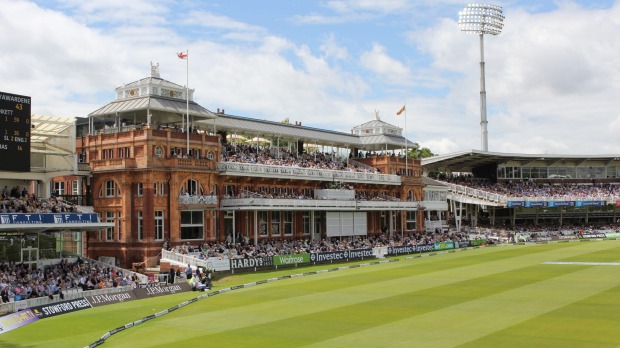
We are nowhere near the Louvre and it's unlikely that Leonardo da Vinci ever played cricket, but the Mona Lisa comes to mind when I glimpse the famous old Ashes urn.
Like the Renaissance masterpiece, this prized sporting trophy is tiny in stature, huge in reputation. Measuring 11 centimetres high, it's the pocket-sized symbol of the blood, sweat and tears that have been shed between Australia and England over the past 140 years. Next July, the Ashes battle will resume, with the two teams trading deliveries, shots and barbs in the United Kingdom.
Seeing the urn –and pondering all those classic Ashes encounters – is a highlight of the daily behind-the-scenes tours at Lord's, the 'Home of Cricket'.
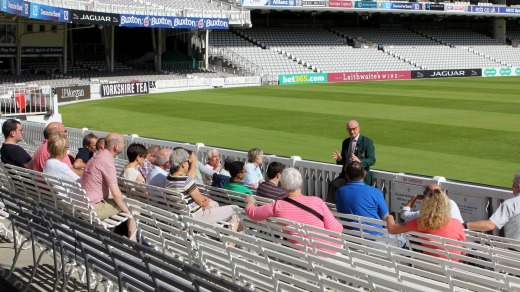
This iconic north London ground, the headquarters of Marylebone Cricket Club (MCC), has been celebrating its bicentenary this year (2014), with myriad events, including a match between an MCC side and a Rest of the World XI, featuring some of the greatest cricketers of the modern era – and a few promising young stars.
Australian Aaron Finch struck a brilliant 181 runs off 145 balls to inspire MCC to victory, but the game's headline-grabber was, not for the first time in his life, Shane Warne, whose right hand was broken by a beamer from his former Baggy Greens teammate Brett Lee.
The Ashes urn is the museum’s centrepiece.
The plaster cast that Warne subsequently wore is now displayed – with his signature– in Lord's MCC Museum. Tracing the history of the sport, from its 16th century origins in the south-east English countryside to today's multi-formatted global game, the museum is an evolving treasure trove of cricketing memorabilia; packed with momentous bats, balls, stumps, caps, ties, blazers, gloves, coffins, Wisden almanacks, vintage pictures, the Laws of Cricket and snippets about the controversies that have dogged the game. There's a section on the 1932-33 'Bodyline' Ashes series, when Douglas Jardine's England bowlers employed ferocious tactics to thwart the run-scoring majesty of 'The Don', Sir Donald Bradman.
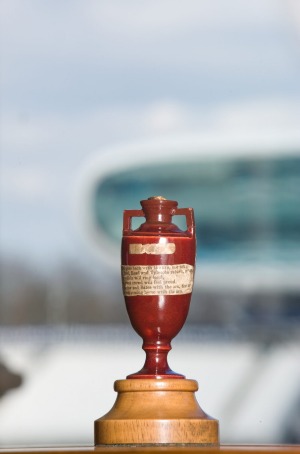
The Ashes urn is the museum's centrepiece, and Ellie, my green-blazered tour guide, regales its story, which dates back to 1882. After England lost a Test match to Australia at The Oval in south London, the Sporting Times published a mock obituary of English cricket, surmising that: "The body will be cremated and the ashes taken to Australia".
Vowing to bring the 'Ashes' home, England captain Ivo Bligh led the tourists to victory Down Under later that year and was given a Terracotta urn – containing the ashes of a burnt cricket ball – at a Christmas Eve gathering at the Rupertswood Estate near Melbourne.
Bligh also fell in love there – with Florence Murphy, the companion of Lady Janet Clarke, mistress of Rupertswood. Ivo and Florence married and returned to England with the urn, which Ivo regarded as a personal keepsake. It stayed on the mantelpiece at the Bligh family home in Kent until his death in 1927, when, at Ivo's request, Florence bequeathed it to MCC, where it has been safely stored ever since.
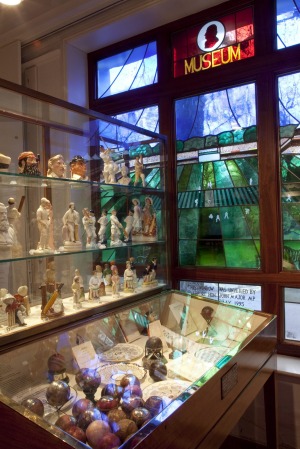
The urn you see Ashes winners holding aloft? That's a replica.
The whiff of cricketing heritage – so palpable in the museum – also infuses the Lord's Pavilion. This venerable late-Victorian building is a maze of rooms and corridors, its walls decorated with eye-catching works of art, including paintings of esteemed cricket grounds (like the MCG), quirky caricatures of icons like Sir Viv Richards and Graham Gooch and rustic framed sketches of Georgian-era cricket.
There's also a portrait of Thomas Lord – after whom Lord's is named. A useful bowler, but an even cannier businessman, Lord was approached by a group of cricket-loving nobles, who desired an enclosed playing space away from prying eyes and riff-raff. Lord, a Yorkshireman, secured some land in Marylebone in 1787, sparking the birth of MCC. The club later moved to a new ground in leafy St John's Wood – 3km up the road –but after Parliament sanctioned the Regent's Canal, which would bisect its playing field, it was forced to move to its current base.
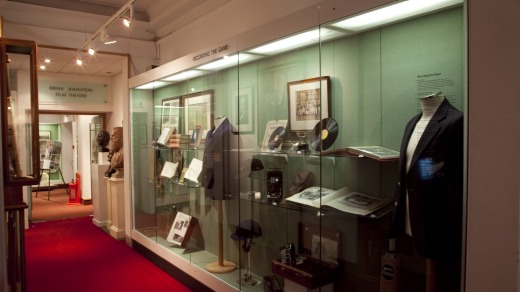
Ellie tells me that when Lord's sprouted in 1814, there were "duck ponds on the outfield – and 500 grazing sheep".
We come to the pavilion's Long Room, where, on match days, dapper MCC members, in their striking red and gold blazers, jostle for chairs and a view. The players must pass through this elegant passage on their way to – and from – the hallowed turf.
The Long Room is one of London's quaintest venues for afternoon tea. On selected dates, visitors can enjoy hand-baked scones with homemade jam and Cornish clotted cream and finger sandwiches, cakes and dainties (and champagne, if you wish), plus a short ground tour.
The regular, anecdote-laden tours last about 100 minutes. Cricket tragics could probably spend all that time perusing the dressing room honours boards – which commemorate players who score a century or take five wickets in an innings or ten in a Lord's Test.
Legends like Jack Hobbs, Wally Hammond and Ian Botham grace the home board. Australians dominate the away one, including 'The Don', Keith Miller, Allan Border, Glenn McGrath, Michael Clarke and Bob Massie, whose 16-137, on debut in 1972, remain Lord's best-ever Test match bowling figures.
Some names are conspicuous by their absence. Ricky Ponting, Dennis Lillee, Sachin Tendulkar, Brian Lara and Warnie never troubled the Lord's signwriters.
Opposite the pavilion, hovering like an UFO on the other side of the ground, the JP Morgan Media Centre is the tour's last stop.
Unveiled before the 1999 World Cup, this single-shell aluminium building won the prestigious Stirling Prize for architecture. It's eerily quiet inside today, but I try to imagine the buzz of match days when it's a hive of journalists and commentators (including Mr Warne).
While tickets for Lord's Ashes Tests sell out quickly – the capacity of this intimate ground is just 29,500 – you can usually nab seats for one-day games, Twenty20 'blasts' and county matches (Lord's is also home to Middlesex Cricket Club, captained by evergreen Australian Test opener Chris Rogers).
'The Home of Cricket' may be 200, but there's a lot of life left in this dear old thing.
The writer was a guest of Lord's.
TRIP NOTES
MORE INFORMATION
lords.org.
GETTING THERE
Qantas, British Airways and Singapore Airlines are among the airlines that fly between Australia and the UK. Lord's is a ten-minute walk from St John's Wood London Underground station; see tfl.gov.uk
TOURING THERE
Public tours of Lord's usually leave on the hour from 10am to 2 or 3pm and cost $32 for adults or $22 concession.